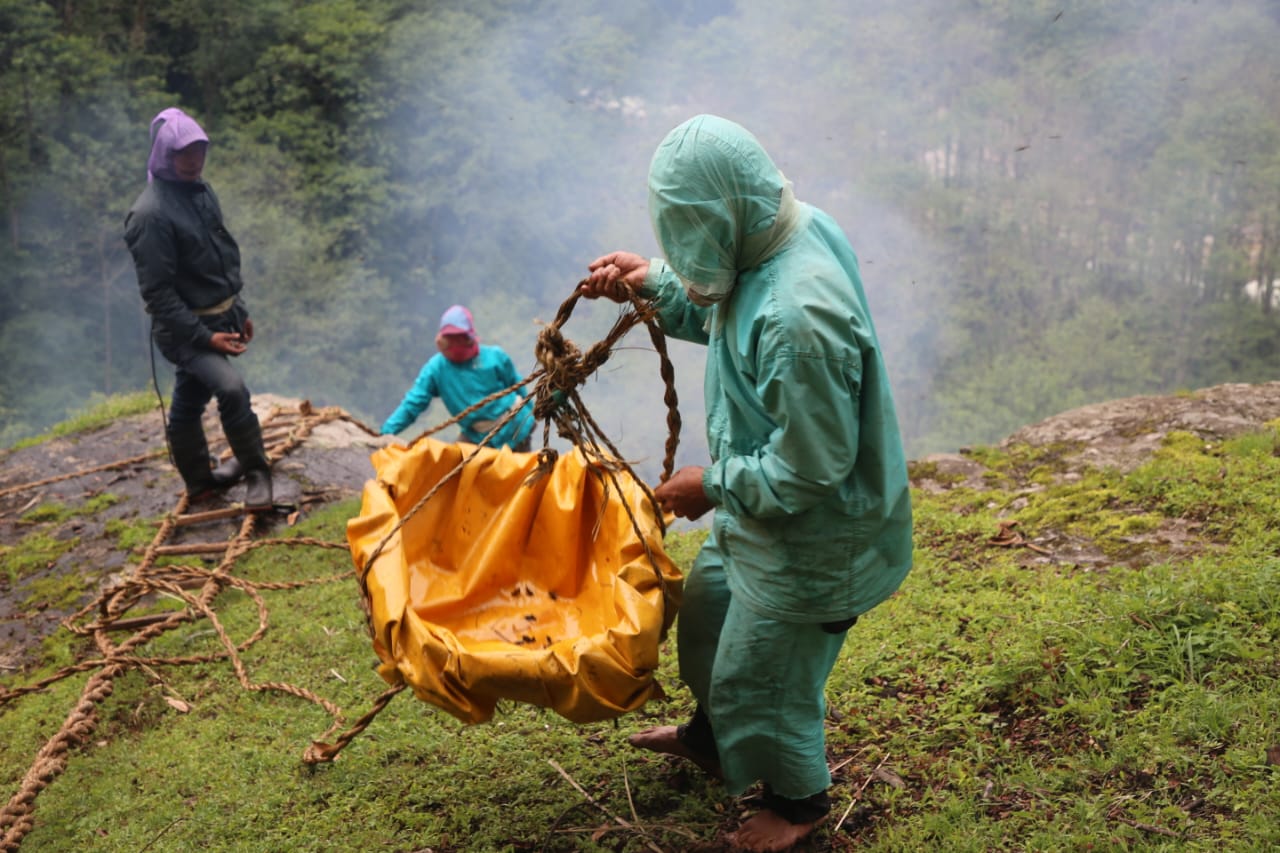Blog
Exploring the Biodiversity of the Himalayas Through Its Mad Honey Bees

Nestled in the mountain ranges of Asia, the Himalayas offer a sanctuary for an impressive array of biodiversity. Among the region’s unique inhabitants are the indigenous bees that produce the intriguing substance known as mad honey. This rare, naturally occurring hallucinogenic honey sheds light on the rich biodiversity of the Himalayas.
The Mad Honey Bees
The honey bees that produce mad honey are the giant Himalayan honey bees (Apis dorsata laboriosa), which are a subspecies of the larger Apis dorsata, or the giant honey bee. These bees are the world’s largest honey bees, reaching lengths of up to 3 centimeters. They build their large, exposed nests on the faces of towering cliffs, a unique adaptation that protects them from predators and harsh weather conditions.
Mad Honey: A Product of Biodiversity
The potency of mad honey stems from the nectar of certain rhododendron species, primarily Rhododendron luteum and Rhododendron ponticum. When these bees feed on the nectar of these rhododendron flowers, they ingest grayanotoxins. These toxins, while harmless to the bees, accumulate in the honey they produce and impart it with unique psychotropic properties.
The rhododendron species that produce these toxins are native to the Himalayas and are just a small example of the rich biodiversity found within this region.
The Role of Mad Honey Bees in the Himalayan Ecosystem
The mad honey bees play a crucial role in maintaining the biodiversity of the Himalayan region. As pollinators, they facilitate the reproduction of many plant species, including the rhododendrons they favor for nectar. This pollination ensures plant diversity, which in turn influences the diversity of other organisms in the ecosystem.
Moreover, the hives of the mad honey bees are also a critical food source for several species, including the Himalayan black bear. This interaction between bees, bears, and plants further underscores the interconnectedness of Himalayan biodiversity.
The Cultural Significance of Mad Honey Bees
Mad honey bees are also intertwined with the cultural practices of local communities. For centuries, the Gurung people of Nepal have performed the traditional and dangerous practice of honey hunting, risking their lives to gather this precious substance. Mad honey is not only a source of income for these communities but also has ceremonial, medicinal, and recreational significance.
Conservation Challenges
The mad honey bees, and the unique biodiversity they represent, face several conservation challenges. Habitat destruction, climate change, and commercial honey hunting threaten their existence. There’s a pressing need for conservation efforts that balance the needs of local communities with the ecological significance of these unique bees.
In conclusion, the mad honey bees of the Himalayas offer a remarkable glimpse into the region’s rich biodiversity. The relationship between these bees, the rhododendron plants, and the wider ecosystem is a powerful illustration of the intricate web of life. Their story serves as a reminder of the need to preserve and protect the world’s biodiversity, of which they are an invaluable part.




















